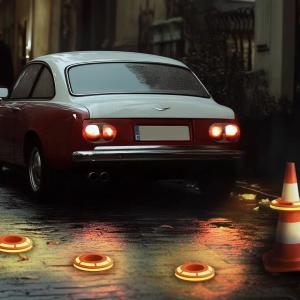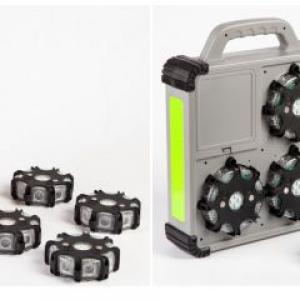Red vs Amber: Which Arrow Light Is Brighter and Safer for Road Use?
Red vs Amber Arrow Lights: Which Is Brighter and Better for Safety?
When choosing a warning or arrow light for road safety, color plays a key role in visibility and effectiveness. Among the most commonly used colors—red and amber—many wonder: which one is brighter and more suitable for outdoor and traffic environments?
Let’s break it down.
1. Human Eye Sensitivity: Amber Appears Brighter
The human eye doesn’t perceive all colors equally.
-
Amber light has a wavelength around 590–610nm, where the human eye is most sensitive.
-
Red light, with a wavelength of 620–750nm, lies at the edge of our visible spectrum.
This means that even if both lights emit the same lumens, amber will appear brighter to the human eye.
2. Better Performance in Fog, Rain, and Snow
In real-world outdoor environments, visibility often drops due to:
-
Fog
-
Dust
-
Rain or snow
Amber light has a shorter wavelength than red, allowing it to penetrate particles in the air more effectively. This makes amber lights easier to see in poor weather or low-visibility situations—a major advantage for construction and emergency response.
3. Color Usage in Road Safety Applications
Each color serves a distinct purpose:
-
Red signals "stop", danger, or emergency—commonly used for brake lights or rear warning signals.
-
Amber indicates caution or guidance—ideal for arrow lights, barriers, and work zones.
Because arrow lights are meant to direct traffic rather than signal an emergency stop, amber is the preferred and more effective choice.


Conclusion: Amber Is the Brighter, Safer Choice for Arrow Lights
While red lights have their place in emergency alerts, amber arrow lights offer superior visibility and clarity, especially in dynamic work zones and weather-challenged environments.
If your priority is to maximize visibility, guide traffic efficiently, and ensure worker safety, amber LED arrow lights are the better option.




